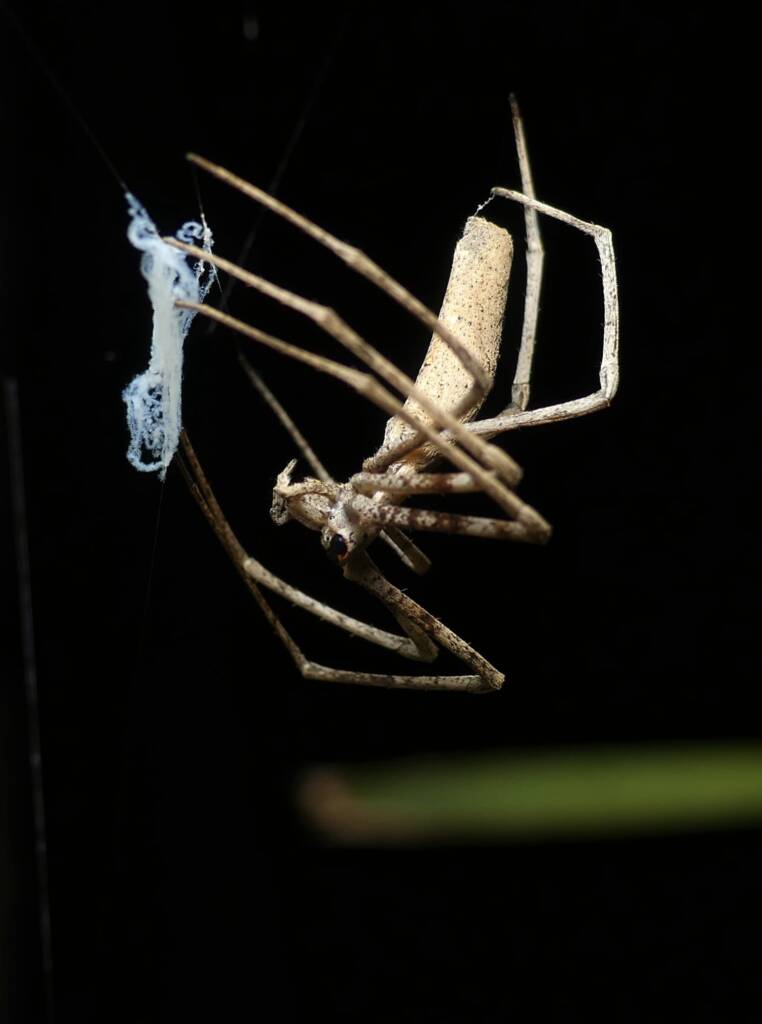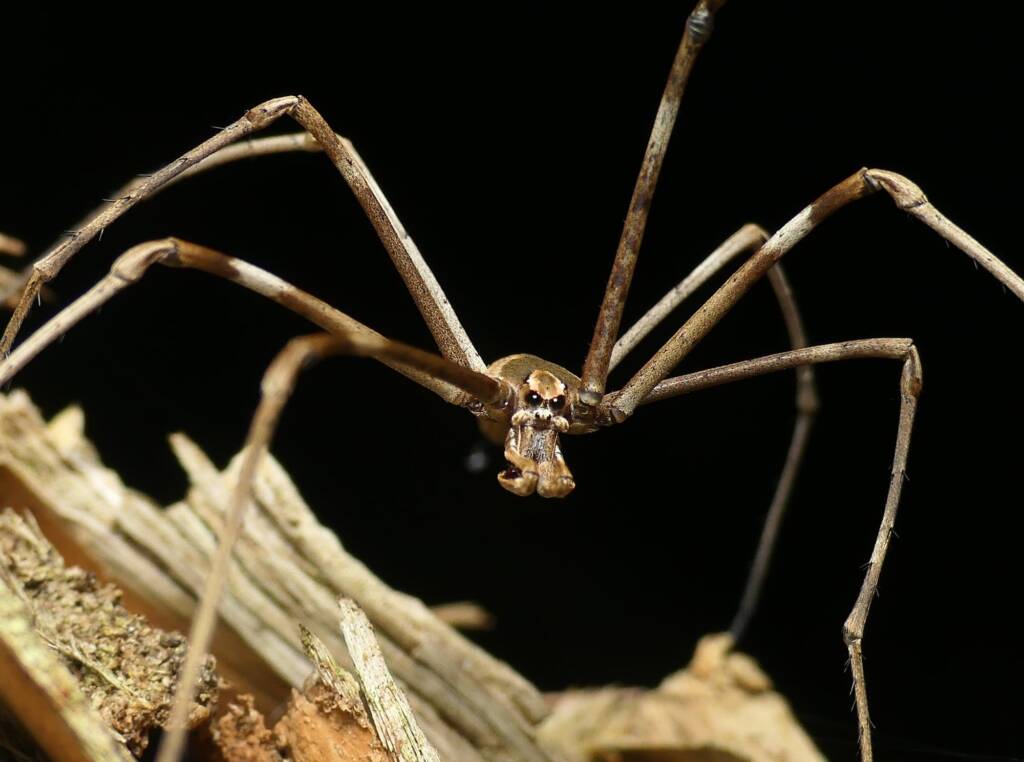Ogre-faced Net-casting SpiderNet Casting Deinopis
This group of amazing spiders, genus Deinopis, catch their prey with a cribellate web.

The Net-casting Spiders (also commonly known as Net-caster Spiders or Netcaster) do not build permanent web like other orb spiders, instead they spin a rectangular shaped cribellate silk web. They hold the net, with their front pair of legs, usually as they hang almost vertically above passing prey. As the prey passed underneath, they drop or throw their net over the prey to capture it. The prey are often ants, beetles, crickets and even other spiders.
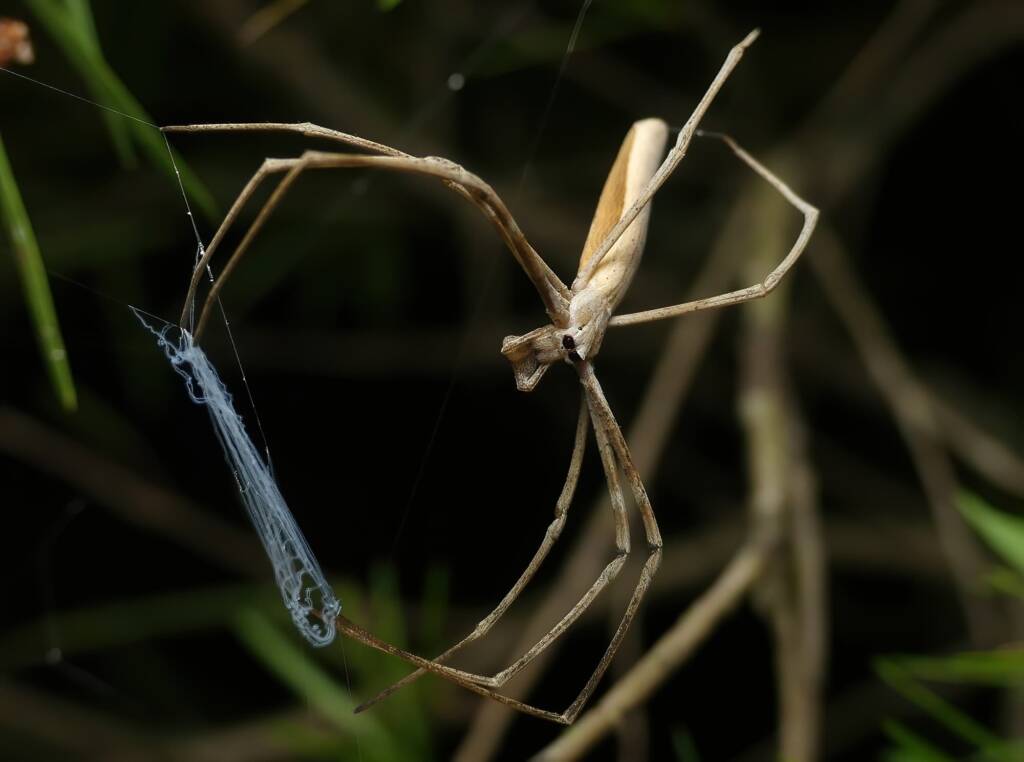
Cribellate silk Sheet web building spiders, like the common black house or window spiders, make their webs with this sort of catching silk (sheet or shawl webs), as do the net casting spiders and their relatives. Cribellate silk is produced from many tiny, silk glands placed beneath a specialised, flattened spinning organ called the cribellum. The cribellum is placed in front of the spinnerets and is derived from spinnerets (the anterior median spinnerets) present in ancestral araneomorphs. Its surface is covered by hundreds or thousands of tiny, elongate spigots, each producing a single fibril of cribellate silk about 0.00001 mm thick. All of these spigots act together to produce a single cribellate thread made up of thousands of the silk fibrils. They are supported on thicker lines produced by spigots on the posterior and median spinnerets. A web made with a meshwork of these composite ‘wool-like’ threads is particularly effective at tangling the bristles, spines and claws of insect prey. The fine fibrils of cribellate silk also appear to have some type of ‘dry adhesive’ properties (possibly electrostatic in nature) and will even cling to smooth beetle cuticle.2
Source: Australian Museum
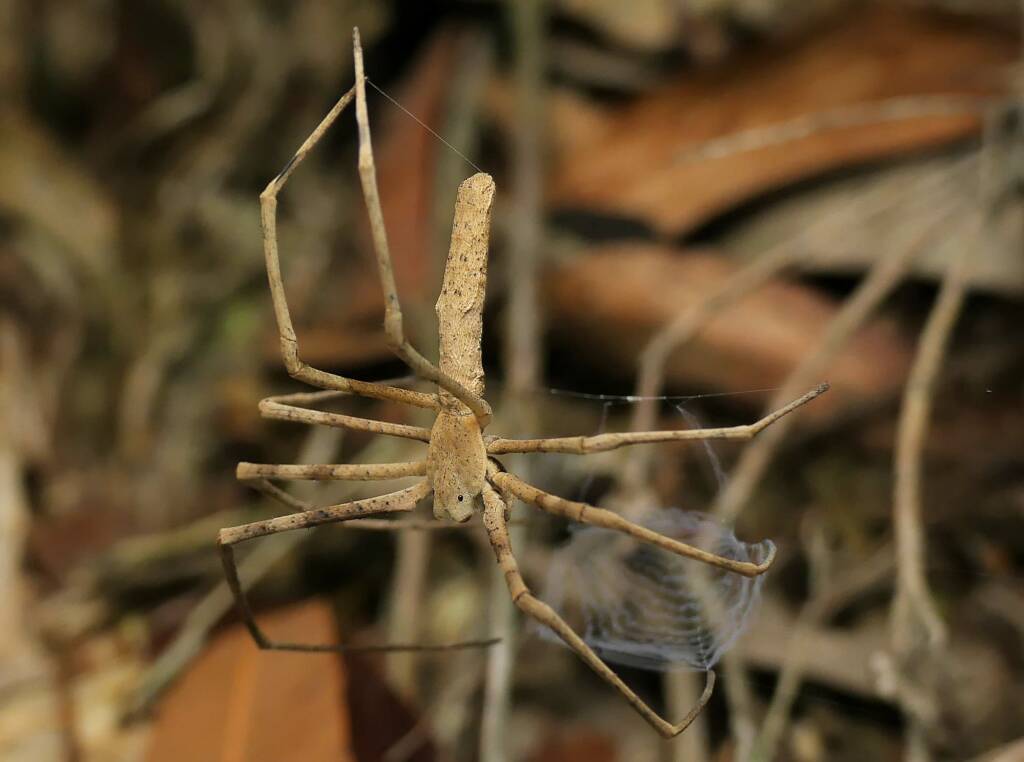
The genus Deinopis is derived from the Greek deinos, meaning fearful, and opis, meaning appearance.

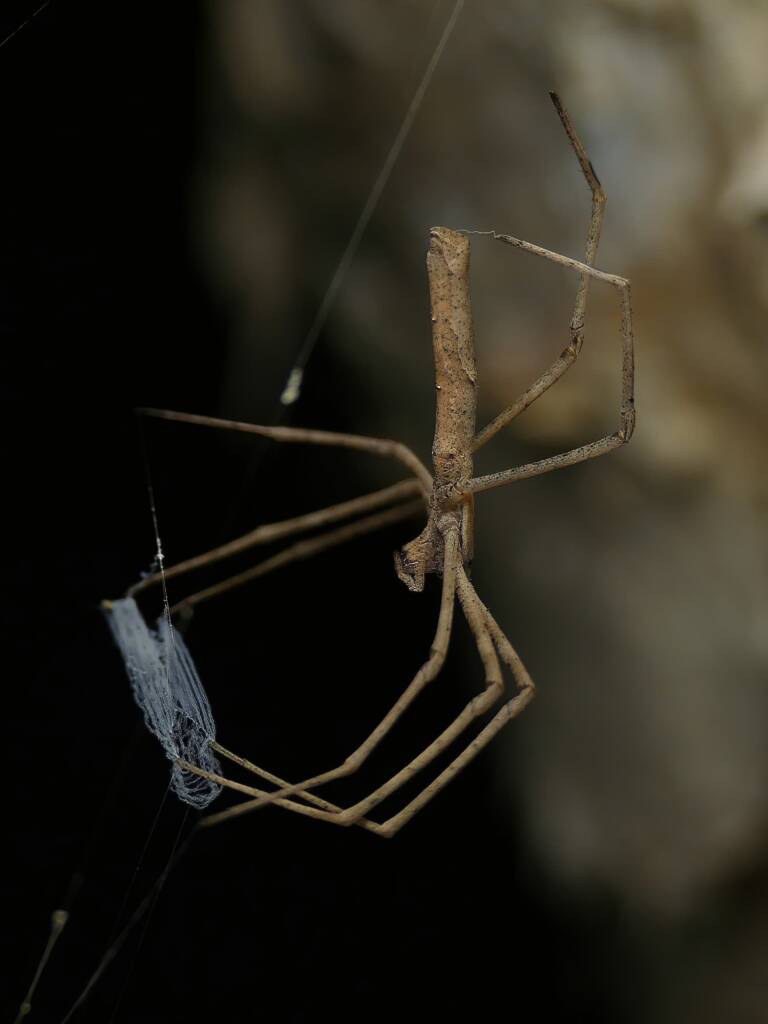

The species Deinopis ravidus is now re-classified to species Asianopis ravida (synonym Deinopis ravida).
Deinopis ravidus L. Koch, 1878a: 1041, pl. 91, f. 3 (Df).
Source: Taxon details, Family: Deinopidae / Genus: Asianopis, World Spider Catalog,
Asianopis ravida Chamberland et al., 2022: 9 (T from Deinopis).
Deinopis ravida Dupérré, 2023: 166, f. 33A-D (f).

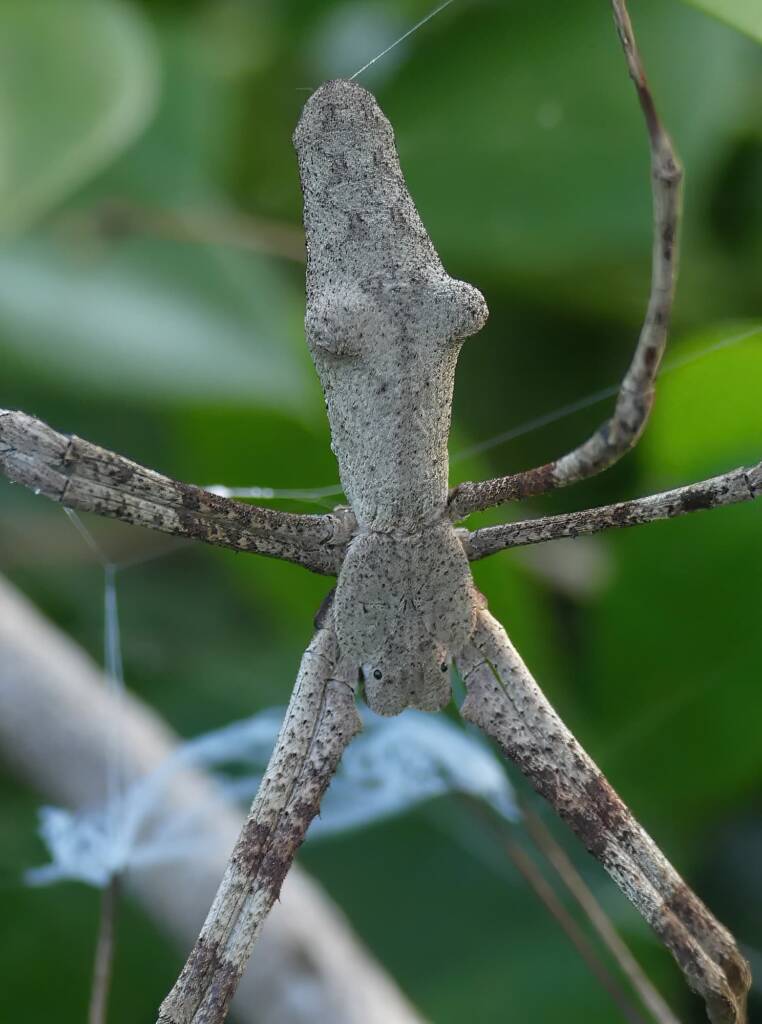
- Scientific classification
- Kingdom: Animalia
- Phylum: Arthropoda
- Subphylum: Chelicerata
- Class: Arachnida
- Order: Araneae
- Suborder: Araneomorphae
- Infraorder: Entelegynae
- Superfamily: Uloboroidea
- Family: Deinopidae
- Genus: Deinopis
Footnote & References
- Photos Ogre-faced Net-casting Spider (genus Deinopis) © Stefan Jones
- Silk: the spider’s success story, Australian Museum, https://australian.museum/learn/animals/spiders/silk-the-spiders-success-story/
- Taxon details, Family: Deinopidae / Genus: Asianopis, Asianopis ravida (L. Koch, 1878), World Spider Catalog, https://wsc.nmbe.ch/species/8660/Deinopis_ravida
- Cribellate vs Ecribellate Silk, Hebets Lab, https://hebetslab.unl.edu/portfolio-posts/cribellate-vs-ecribellate-silk/
- Cribellate Spiders, and Some More Thoughts on that Mysterious Thing from Peru, by Charley Eiseman, 9 September 2013, BugTracks, https://bugtracks.wordpress.com/2013/09/09/cribellate-spiders-and-some-more-thoughts-on-that-mysterious-thing-from-peru/
Ogre-faced Net-casting SpiderNet Casting Deinopis
SpidersIndex of Spider Images Spiders in Australia Araneidae — Orb Weavers Arkys Australian Huntsman Spider Barking Spider Black House Spider Carepalxis sp Celaenia sp Crab Spiders Deinopidae — Net-casting Spiders Dolomedes sp Dolophones sp Flower Spiders Hackled Orbweavers (Uloboridae) Jewel Spider Jumping Spider Long Jawed Spider (Tetragnatha sp) Lynx Spider (Oxyopes) Mangrovia albida Maratus volans Missulena occatoria (Red-headed Mouse Spider) Miturgidae Nicodamidae (Red and Black Spider) Ogre-faced Net-casting Spider Poltys sp (Twig Spider) Redback Spider Scorpion-tailed Spider (Arachnura higginsi) Thomisidae Tiger Spider (Trichonephila plumipes) White-spotted Swift Spider (Nyssus albopunctatus) Wolf Spider


